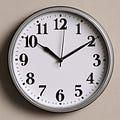Pretend you’re working on something. You look up at a wall clock.
Would you prefer that clock to say it’s 10:10 A.M or 10:10 P.M.?
I bet the answer just jumped into your head.
Why?
Because by the time we reach working age, we’ve already identified ourselves as having a favorite time of day to do our work. You know, “I’m a morning person,” or “I do my best work after midnight.”
But, we have other favorite times, too.
What’s your favorite day of the week?
Days of the week are branded. They have different brands in different cultures. Let’s start with Western cultures.
There are a slew of songs about Monday’s brand, most of them not all that cheerful. Back to the grind and all that. Untrustworthy.
Tuesday’s brand has historically been so bland (except for the afternoon, for some reason) that we had to connect it with a food item…tacos!…to give it some oomph.
Wednesday had the good fortune of being at the center of the modern work week, so Hump Day came naturally and has stuck since the 50s.
Thursday’s like Tuesday; another blah branded day. Thirsty Thursday? Come on.
Here’s where things get interesting.
Friday and Saturday are strong brands in the modern Western secular world. One’s a day to be endured, but filled with hopeful anticipation and low lights nights; the other, blessed “free time” in the park, and a night alright for fighting!
But, these days are set aside for Islamic and Jewish religious services, making their brands highly culturally relative.
Sundays are even more complicated. In most of the West, they’re part of “the weekend.” In fact, for most of the post-industrial age, Sunday was the only day off work. In Christian cultures it’s the sabbath. Observing the sabbath has historically meant preserving the day for church-going and prayer, not for working. There was a time when practically all American stores, including grocery stores, were closed on Sunday. Not anymore. Malls are packed on Sundays. And, millions of people work on Sunday in hospitals, hotels, retail stores, warehouses, call centers, or public safety.
And, then there are the months. Every month has its own brand associations. We don’t need to go through them all, but you know which ones are your favorites.
Think about April and November. April is rainy and full of the hope for the coming spring, yet T.S. Eliot called it “the cruelest month.” November is a melancholy, dreary time, only partly rescued in modern America by Thanksgiving’s mobilization of “the holiday season.”
And, poor September, still sunny and with lingering chances for singing and dancing, but forever tainted by the impending dread of “back to school.”
These time preferences get established early in our identities and subtly shape the way we approach days, weeks, and months. We believe they reflect an obedience to deep biological rhythms, and they may. I’m slightly skeptical. I think our preconceptions and attitudes about the time of day, the day of the week, or the month of the year do a lot more to shape our experiences of time than we realize.
But ideas or attitudes about time can only go so far.
Do you know anyone who works swing shifts? My brother was a New York City cop, which meant every two weeks he’d go from working 8 A.M - 4 P.M., to working 4 P.M - Midnight, and then from Midnight to 8 A.M. This used to astonish me! How do people live like that? We now know that rotating shifts has all kinds of health and productivity effects. We’re adaptable creatures, but our bodies have limits.
It’s surprising to think about the time favorites we carry around, and the impact they have on what we eat, wear, and do. Until that five o’clock whistle blows and no one owns a piece of my time!
Wait…those days are gone, too?
How has our relationship with time changed now that we really can be there, “any time at all,” like the Beatles’ song promised?; now that we either live in “real time,” or don’t?
No matter your favorite, Antoine’s summary till wraps it up with a smile!


